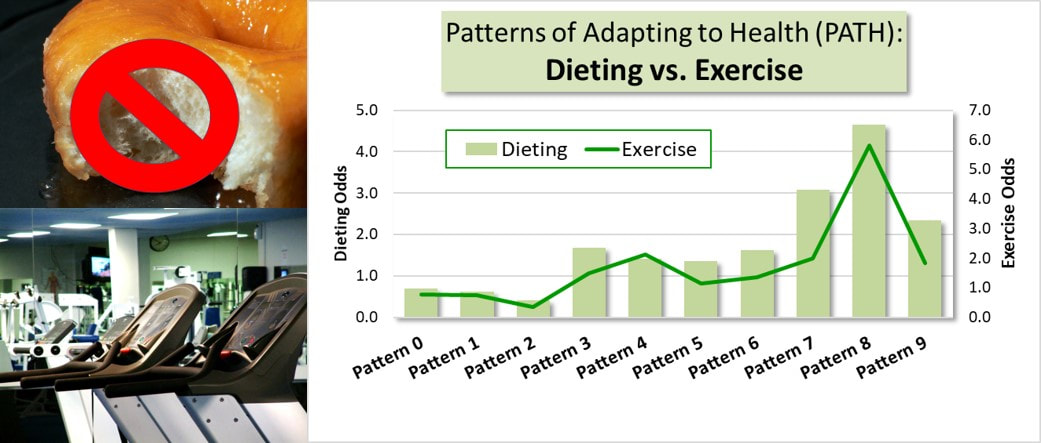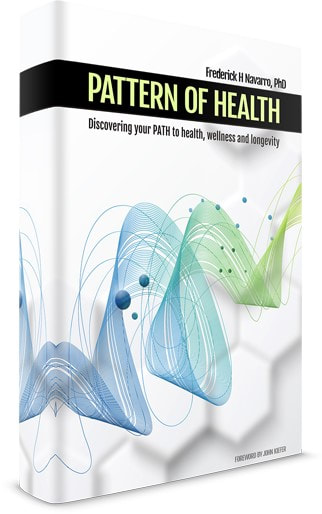|
Dieting is the most frequently promoted method for losing weight. Just count the number of Jenny-Craig, Nutrisystem, or other diet product commercials on any given day!
But why is dieting promoted far more often than exercise? The Patterns of Adapting to Health (PATH) offer insight into this question. The PATH show that adult health-related behavior conforms to predictable patterns rather than being entirely unique to each person. What this means is that health-related behavior options a person can actually choose is constrained by the behavior defined by their dominant pattern. Example The graph above looks at the odds of using dieting and/or exercise as a health promoting activity in a sample of over 2,000 adults. The odds of choosing dieting were greater than the odds choosing exercise for six of the nine patterns. Adults dominated by patterns 3, 5, 7, 8, and 9 were more likely to choose dieting over exercise. Adults dominated by Pattern 8 were the only ones with extremely high odds of choosing both. The PATH Effect This outcome is predicted by the patterns. All the PATH, with the exception of Pattern 8, are defined by lower levels of physical activity or exercise. In contrast, patterns 3, 5, 6 and especially patterns 7, 8 and 9 are defined by higher interest in healthy dieting. The result, is a much larger consumer market for dieting products versus exercise products. The PATH help explain why dieting products are promoted at a much higher rate than exercise products. Dieting is a health-related behavior option "allowed" by many more patterns while only one pattern, Pattern 8, allows high levels of physical activity or exercise. The PATH explain why the market is smaller for exercise products. More adults find it difficult to increase and maintain higher levels of exercise because their dominant PATH resist this behavior. It is only a realistic option for those adults dominated by Pattern 8. #diet #exercise #health #behavior #weightloss
4 Comments
8/8/2022 03:53:10 am
Thank you for sharing a great piece, very informative and could really help better ideas for those who are planning to start their weight loss journey!
Reply
7/22/2023 08:00:46 am
This means wellbeing related conduct choices an individual can really pick is compelled by the conduct characterized by their predominant example.
Reply
9/15/2023 02:56:38 pm
The odds of choosing dieting were greater than the odds choosing exercise for six of the nine patterns. I truly appreciate your great post!
Reply
Leave a Reply. |
AuthorFrederick H. Navarro, PhD. Archives
March 2019
Categories |
|
Copyright © 2017 PATH Institute
|
Website by RyTech, LLC
|


 RSS Feed
RSS Feed

